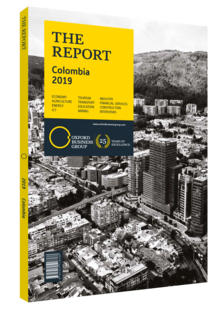Ángela María Orozco Gómez, Minister of Transport: Interview

Interview: Ángela María Orozco Gómez
What challenges does Colombia’s urban transport face, and what is being done to overcome them?
ÁNGELA MARÍA OROZCO GÓMEZ: The biggest challenge we face under our current urban mobility model is sustainability. Many of the projects in progress were designed with the assumption that they would be self-sustainable, which has not been the case, resulting in operational issues.
Additionally, a number of projects were awarded without the necessary planning on matters related to infrastructure, which led to implementation failures. Ongoing and future projects are now devised based on rigorous studies that take into consideration construction, implementation and operability. Support for managers, operators and regulators of the system must also be provided to ensure the adequate administration of the transport ecosystem. Disparities across cities are evident and are usually based on the institutional capacity of local government. Therefore, we are seeking resources from international cooperation to strengthen the capacity of administrative bodies and governance.
How can the logistical chain become more efficient?
OROZCO: We have been working towards this goal in conjunction with a number of entities across the logistical value chain, as well as through overarching programmes such as the National Development Plan and the Intermodal Transport Master Plan (Plan Maestro de Transporte Intermodal, PMTI). We have made efforts to formalise the sector by renewing vehicle fleets and establishing training programmes.
We are developing the concept of port communities, which require all stakeholders to submit and share information in an effort to better plan logistical operations in ports and related activities. In terms of infrastructure, we must look not only at the actual port infrastructure but also at the supporting activities and related infrastructure – through the creation of logistical platforms around the ports. Under the PMTI, a number of projects are under way to ensure better connectivity between the big logistical corridors and the ports, in order to effectively decongest urban centres and increase the efficiency of cargo transport.
How is road infrastructure being developed?
OROZCO: Improving road infrastructure is one of the key pillars to boosting the country’s competitiveness. However, this requires an integrated approach: taking into account large corridors, secondary and tertiary road networks, and more generally, establishing an integrated intermodal logistical system with the purpose of creating a more efficient and competitive transport system for Colombia. In this context, the administration has sought to reactivate the 4G infrastructure development programme by tackling bottlenecks associated with the mismanagement of these projects.
These efforts are paramount to ensure the adequate financing and implementation of the programme moving forward. Through a coordination with the different sector stakeholders and a reorganisation of the various administrative bodies, we will have a more transparent and efficient system, and thus reinvigorate the development of road infrastructure.
When we look at the national road network, 364 municipalities are two or more hours away from the closest city transport hub and in many cases may have little or non-viable access. It is clear that, for large projects such as the 4G programme to be effective, we must ensure that they will connect farms and industries that are responsible for the creation of value. The newly launched tertiary roads programme will help to improve accessibility, but cooperation between national and regional authorities is also necessary for the programme to be successful.
Improving Colombia’s global competitiveness will require us to consider the transport industry as a whole as well as ensuring an adequate use of intermodal transportation by focusing not only on developing road infrastructure but also on river and rail networks.
You have reached the limit of premium articles you can view for free.
Choose from the options below to purchase print or digital editions of our Reports. You can also purchase a website subscription giving you unlimited access to all of our Reports online for 12 months.
If you have already purchased this Report or have a website subscription, please login to continue.

